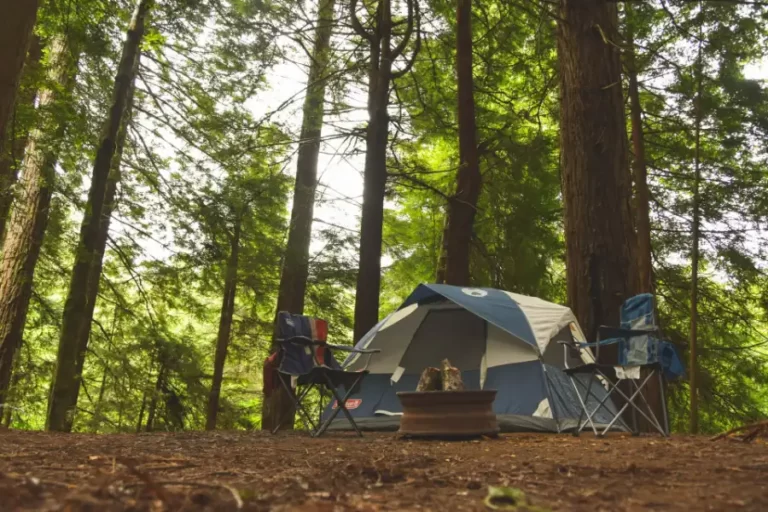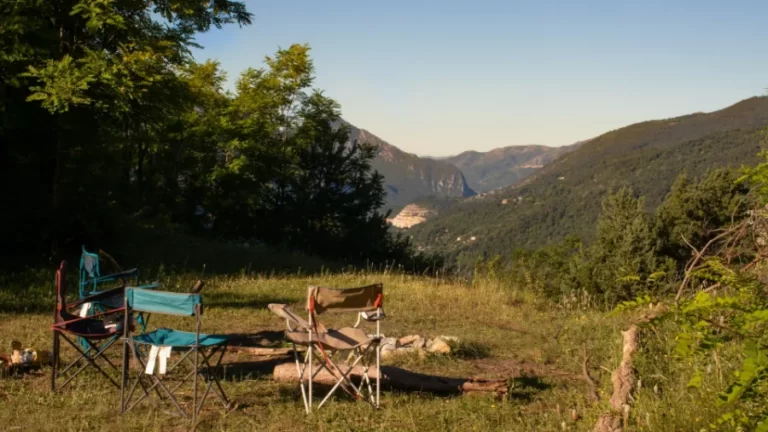Is A 40 Degree Sleeping Bag Warm Enough for Your Camping Needs?

Last updated on August 13th, 2024 at 12:05 am
Will the 40 degree sleeping bag provide adequate warmth? The quality of your sleeping experience relies on the type of sleeping bag you choose to match the outdoor conditions.
When it comes to purchasing camp equipment for your outdoor adventure, the sleeping bag stands out as the utmost essential.
Is A 40 Degree Sleeping Bag Warm Enough for Your Camping Needs?
The 40 degree sleeping bag is warm enough for most people. For some, it may be cold, but not the dangerous cold. These bags are ideal for camping in warm climates.
This article aims to give you a better understanding of the ratings and delves in-depth into factors that affect your warmth when outdoors.

A Sleeping bag for 40 degree weather
Selecting the right sleeping bag for 40 degree weather can seem to be an intimidating task, especially if you do not understand the temperature ratings on each. Moreover, there are many other considerations that you need to consider, from material to design. But the temperature rating is of utmost importance.
40-degree sleeping bags work well for warm climates. They are usually lightweight and ideal for bike camping. You can also use them for overnight backpacking and/or camping in lower-elevation areas. These bags save on space and weight thanks to their maximum compressibility and lightweight design. This adds to their convenience.
Moreover, these bags feature goose-down insulation. This explains why most of them tend to cost more than their warmer and synthetic counterparts. This temperature rating, however, is not suitable for mountain camping. However, if bike camping and are forced to use a lightweight sleeping bag, there are other ways to increase warmth including sleeping naked in a sleeping bag..
Sleeping bag liners are instrumental in adding an extra 10 degrees to any sleeping bag’s rating. Besides that, the camper can have on warm gear such as a fleece hat and clothing when sleeping. There are thicker sleeping pads that add warmth as well as fleece blankets and travel sheets.
What temperature sleeping bag rating should I get?
Sleeping bags are usually categorized according to temperature ranges. For instance, we have a summer bag that is ideal for warm summer-like conditions. These are usually rated 32 degrees and up and will conveniently save you some money, space, and weight. However, some places tend to get chilly during the night.
Generally, the temperature rating recommended for the 3-season range is between 20- and 32 degrees Fahrenheit and above. For the freezing months of winter, a winter bag will come in handy. The appropriate rating depends on the conditions, but many go up to -40 degrees Fahrenheit.
Sleeping bags are also categorized according to EN/ISO. Under this, we have comfort, lower limit, and extreme. The comfort limit is ideal and anyone can sleep comfortably in a relaxed position without feeling cold. The lower limit indicates the performance limit of any sleeping bag. Extremes are not recommended because anyone can feel cold, and they pose a risk of hypothermia.
How the sleeping bag design affects the warmth
Besides the temperature rating, there are other factors of the sleeping bag that affects its ability to afford sufficient warmth. These include the age of the product, features, and shape. They go a long way in determining how the bag lives up to your expectations.
Shape
Basically, the concept of how a thermos keeps drinks and beverages warm applies to a sleeping bag. If a warm object (in this case, a human body) is put inside a sleeping bag, the bag works to keep the object warm.
If there is extra air space inside the bag, the warm body uses up more energy trying to warm up the air space and keep its warmth.
Sleeping bags that have plenty of room feature a lot of voids that ultimately make them sleep colder than their ratings. Inasmuch as the extra room is more comfortable, you may end up shivering at night and not get any sleep altogether.
Some manufacturers such as Nemo have been very considerate in making sleeping bags that are ideal for different sleeping positions such as the “spoon-shaped” models for side sleepers.
On the other hand, the slim mummy-shaped bags with no extra space not only weigh less but also take less energy from your body. The only downside is that they compromise on comfort. You will have to find that sweet spot that works for you. Just keep in mind that the roomier bags are colder.
Style
The style of the sleeping bag also affects warmth. A good example is the sleeping quilts that many hikers tend to go for. These quilts do not feature the traditional mummy shape but rather take on a minimalist blanket style.
Quilts lack a hood without which you rob yourself of the warmth and comfort that comes with wrapping a hood around your head.
Another thing is, that sleeping quilts tend to be more secured around the sleeping pad and thus, do not easily make a circle around your body. So, while you are saving on the extra weight and space, you are denying yourself warmth and comfort. For newbies, it is advisable to go for mummy-shaped bags with generous hoods.
Age of sleeping bag
The age of the sleeping bag has a significant impact on warmth. Through years of use and storage, sleeping bags tend to lose their loft. A 15-degree rated sleeping bag can perform like a 30-degree bag with time.
Even though this is inevitable, you can strive to take good care of your gear. For one, you can open it before storage rather than stuff it so it breathes outside.
How to choose a sleeping bag temperature rating
The temperature rating on the sleeping bag can be described as the manufacturer’s ‘best guess’ on how warm the bag is to the ‘average’ person.
10-degree buffer rule
When you are out shopping for one, you can apply the 10-degree buffer rule. This means that you add approximately 10-15 degrees to the temperature rating. If the anticipated nighttime low will be around 32 degrees, go for a bag rated between 20 and 25.
Temperature range
Another thing to consider is the temperature range of the area you are camping in. There are different temperature ratings that work well with cold or warm conditions. So, depending on the area you plan to camp in, choose the right rating.
EN/ISO numbers
The EN/ISO numbers are more accurate than any other temperature ratings. The comfort rating is recommended for all since it allows you to sleep warm and comfortably. For the non-EN/ISO-rated bags, you can still use their listed ratings.
Gender
Gender is also an important factor to consider when choosing a temperature rating. Women tend to sleep colder than men. Therefore, women should go for sleeping bags that are rated 10 degrees less than that men. Some manufacturers may rate women’s and men’s sleeping bags differently.
What are the Best 40 degrees sleeping bags?
There are many brands that produce great quality sleeping bags. Here are some of the best 40-degrees sleeping bags you can find on the market.
Sea to Summit Spark 40
This sleeping bag is considered the best ultralight sleeping bag for warm weather. They weigh between 1 and 2 pounds and have great all-around designs that are ideal for a variety of conditions and backpacking trips.
It comes complete with a hood and zipper with a hydrophobic down fill that offers great wet-weather assurance. Moreover, this sleeping bag is well suited for minimalist missions in very warm weather.
The Sea to Summit Spark conveniently packs down to the size of a 1-liter bottle making it easy to carry around.
However, a major downside of this sleeping bag is the short 1/3-length zipper that gives you less wiggle room as well as limits ventilation. Also, its 10-denier shell requires extra care when sleeping outside on rough ground or packing.
Montbell Seamless Down Hugger 800
This model is one of the best-selling products of the reputed Japan-based Montbell. Instead of baffles, this sleeping bag features a web of polyester threads that keep the insulation in check and is ultimately warmer with less down.
More on the inside, it has a liner that features a spiraled elastic thread that expands with the user’s movements and constricts to hug the body. This is an effective way of trapping warmth.
Another thing is, that this sleeping bag is designed for all body sizes and works with side sleepers as well.
The shell is made of airtight nylon that is tightly woven to prevent tears. One downside is that this sleeping bag compromises durability. The shell is too thin and would require extra care to avoid punctures.
Conclusion
Knowing the right temperature rating of sleeping bags that work for you is the first step to improving your outdoor experience. This saves you long, cold, sleepless nights when outdoors.
The right rating among other features that meet your needs will make your camping comfortable and memorable.
You Can Also Read:





![How to Get Rid of Bees While Camping? [10 Easy Tips]](https://agilecamping.com/wp-content/uploads/2022/07/best-way-to-get-rid-of-bees-while-camping-768x512.webp)
